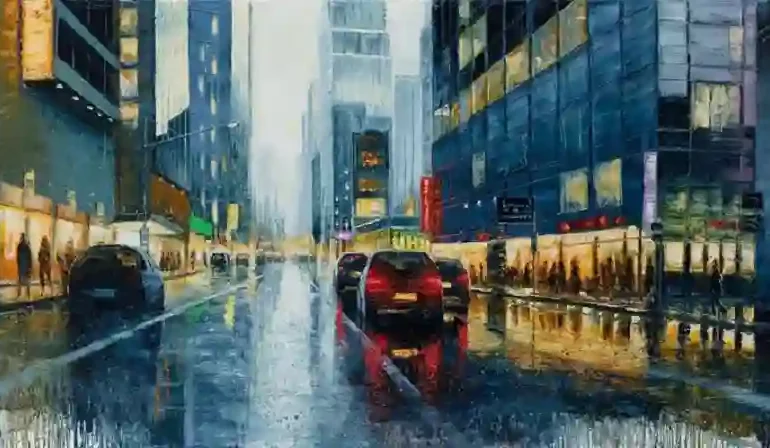The Magic of Glazing: Enhancing Your Oil Paintings with Layers

Oil painting is a versatile medium that allows artists to create depth, luminosity, and subtlety through the layering of colors. Glazing, a technique that involves applying thin, transparent layers of paint over dried layers, is a powerful tool in the oil painter’s arsenal. In this article, we’ll explore the magic of glazing and how it can enhance your oil paintings by adding richness, depth, and a captivating luminous quality.
1. Understanding Glazing:
Glazing is a technique where transparent or semi-transparent layers of paint are applied over dry layers of paint on the canvas. These glazes allow the underlying colors to show through, creating a harmonious and radiant effect. Glazing can be used to adjust color, modify values, and add depth to your oil paintings.
2. Selecting the Right Colors:
When glazing, it’s essential to choose the right colors. Transparent or semi-transparent colors work best for glazing. Colors like transparent red oxide, phthalo blue, and alizarin crimson are excellent choices for glazing because they allow light to pass through them. Experiment with different color combinations to achieve the desired effects in your artwork.
3. Building Up Layers:
To create the magic of glazing, you’ll need to build up multiple thin layers of paint gradually. Start with a dry, well-executed underpainting or base layer. Then, apply a thin glaze of color over it, allowing each layer to dry thoroughly before adding the next. The more layers you build, the richer and more luminous the final result will be.
4. Adjusting Color and Value:
Glazing is a powerful tool for adjusting color and value in your paintings. For example, if a particular area of your painting appears too warm, you can glaze it with a cooler color to achieve the desired balance. Similarly, you can use glazes to darken or lighten areas while maintaining their transparency.
5. Creating Depth and Dimension:
Glazing can add depth and dimension to your oil paintings. By layering transparent colors over darker areas, you can create the illusion of depth and distance. This technique is particularly effective in landscapes and still life paintings, where atmospheric perspective plays a significant role.
6. Capturing Luminosity:
One of the magical qualities of glazing is its ability to capture luminosity and a radiant glow. Transparent glazes allow light to penetrate the layers and bounce back to the viewer’s eye, creating a captivating and almost ethereal effect. This is especially useful when painting subjects with reflective surfaces, like glass or water.
7. Experiment with Mixing and Combinations:
Don’t be afraid to experiment with mixing and combining different glaze colors. Layering multiple glazes of varying colors can result in complex and visually engaging effects. Explore the interplay of warm and cool glazes, complementary colors, or even subtle shifts in color temperature.
8. Control and Patience:
Glazing requires a high level of control and patience. It’s important to apply each layer thinly and evenly. Use soft brushes or glazing mediums to achieve smooth and consistent results. Allow each layer to dry completely before adding the next to prevent unwanted blending or muddiness.
9. Test on a Separate Surface:
Before applying glazes to your final painting, it’s a good practice to test your colors and techniques on a separate surface. This allows you to see how the glazes interact and whether they achieve the desired effect. Once you’re confident in your approach, you can apply it to your main canvas.
10. Protecting Your Painting:
To preserve the luminous quality of glazes, it’s important to protect your finished oil painting. Apply a final layer of varnish once your painting is fully dry. Varnish not only enhances the colors but also provides a protective barrier against environmental factors.
Conclusion:
The magic of glazing in oil painting lies in its ability to add richness, depth, and luminosity to your artwork. By carefully layering transparent or semi-transparent colors, you can achieve captivating and radiant effects that enhance the visual impact of your paintings. Glazing is a technique that requires patience, experimentation, and a keen eye for color and value. When used skillfully, it can elevate your oil paintings to new levels of artistic expression.
So, embrace the magic of glazing in your oil painting practice, and let the layers of transparent color bring your artworks to life with a captivating luminous quality that draws viewers into your artistic world.







